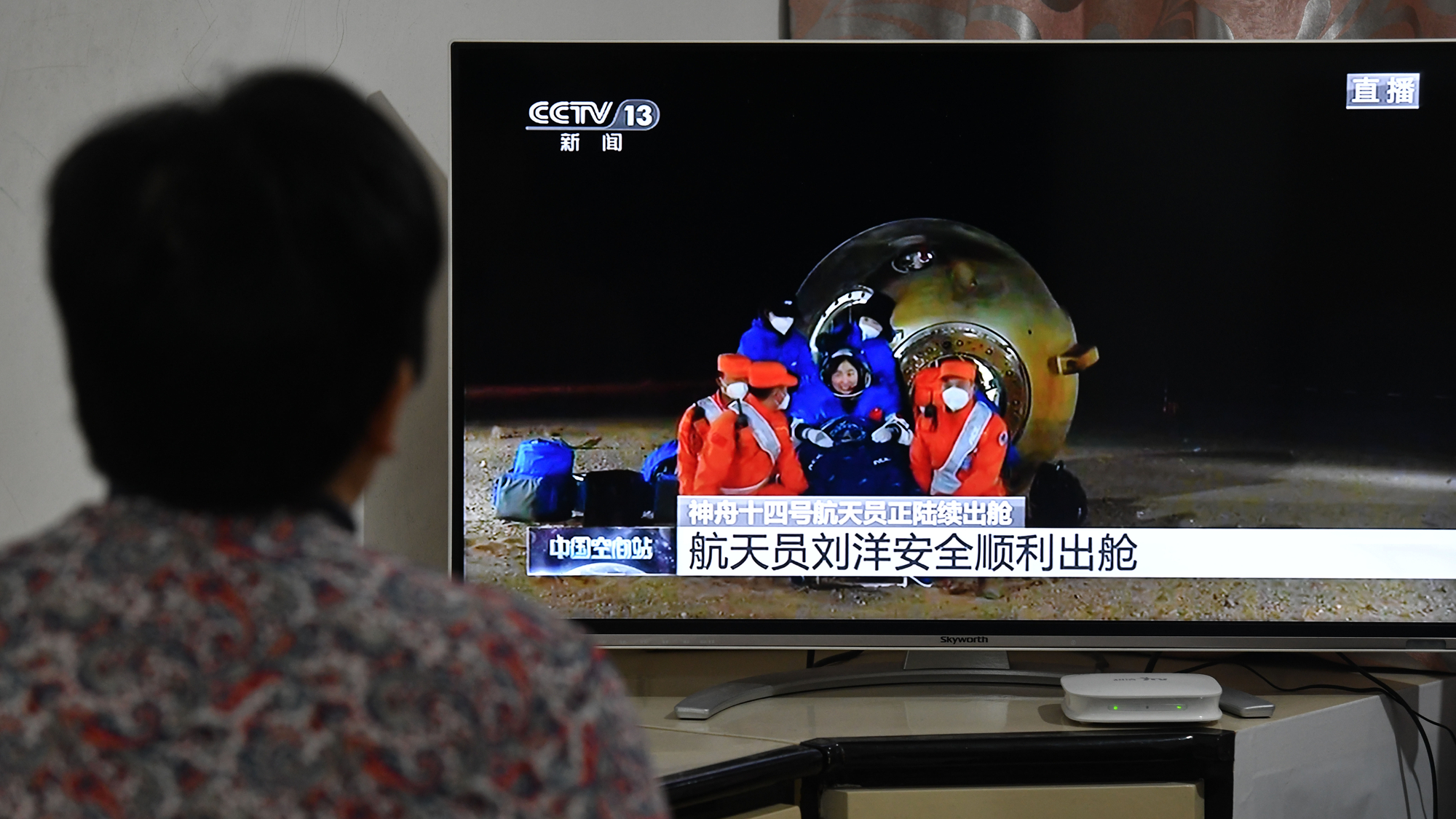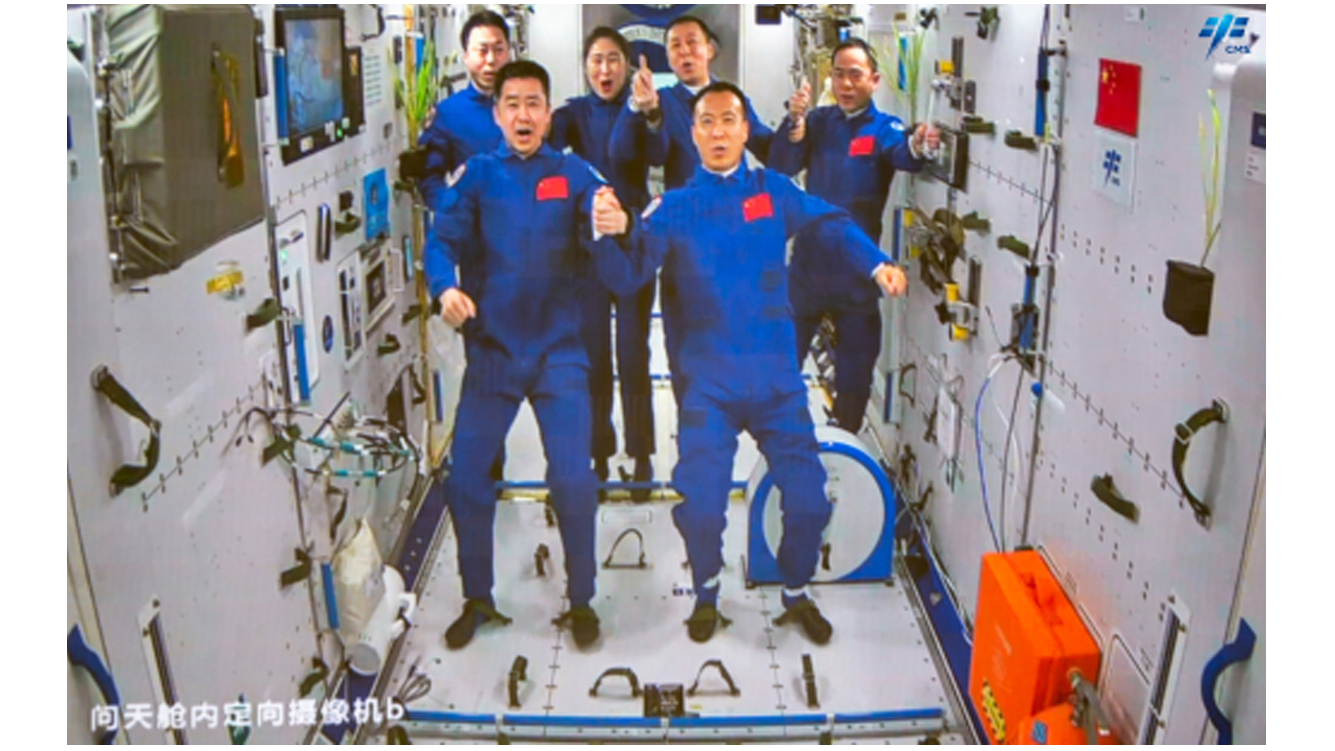China's Shenzhou 14 astronauts return to Earth after helping build Tiangong space station
The astronaut trio oversaw the arrival of the final Tiangong modules.
China's Shenzhou 14 astronauts have handed over control of the Tiangong space station and returned to Earth.
The return capsule from the mission's Shenzhou spacecraft set down safely after sunset within the Dongfeng landing area in the Gobi Desert in the Inner Mongolia Autonomous Region on Sunday (Dec. 4) at around 7 a.m. EST (1200 GMT, 8:00 p.m. local time), about nine hours after undocking from the country's recently completed Tiangong space station.
The safe return marks the end of a six-month-long mission during which astronauts Chen Dong, Liu Yang and Cai Xuzhe oversaw the arrival of the second and third modules for Tiangong and carried out three spacewalks to check and test out the new facilities.
Related: China's Shenzhou 14 astronauts snap stunning photos of Earth, the moon and more


The three astronauts radioed that they were feeling fine shortly after landing, with the message greeted with applause at the Beijing Aerospace Flight Control Center (BACC).
Before leaving, the crew played their part in the country's first crew handover, with the new Wentian and Mengtian modules added to the Tianhe core module allowing both Shenzhou 14 and the newly arrived Shenzhou 15 crews to spend five days together onboard. The get-together marked the first time China has had six astronauts in space simultaneously.
Chen, Liu and Cai also hosted a live and interactive science outreach lecture and sent home stunning images of the Earth and moon during their half year in orbit. They were also involved in five rendezvous and docking maneuvers — with modules, new Tianzhou freighters and Shenzhou craft arriving — two spacecraft separations and two module transpositions, which relocated the Wentian and Mengtian modules to their permanent lateral docking ports.
Breaking space news, the latest updates on rocket launches, skywatching events and more!
Shenzhou 14 launched on June 5 this year, reaching the solo Tianhe module 6.5 hours later, but the crew leave behind a completed and fully operational, three-module, T-shaped Tiangong space station.
The mission matches the Shenzhou 13 mission in being China's longest so far, at 182 days. Mission commander Chen Dong also set a new Chinese record for total time in space, becoming the country's first astronaut to spend more than 200 days in orbit. Chen previously spent 33 days aboard the Tiangong 2 test space lab, a prototype for the larger Tiangong modules, during the Shenzhou 11 mission in 2016.
Shenzhou 14 was the third crewed mission to Tiangong, which at first consisted solely of the Tianhe core module, which launched in April 2021. The first crewed visit to Tianhe, Shenzhou 12, lifted off in June 2021 and landed 92 days later.
The newly underway Shenzhou 15 mission will also last around six months, supplied by the TIanzhou 5 freighter. The spacecraft for the following mission is already at the Jiuquan Satellite Launch Center. Shenzhou 16 has been assembled and tested and is on standby in case of need of an emergency launch to Tiangong, according to China's official space news outlet.
The completed Tiangong station — at which Shenzhou 15 and Tianzhou 5 are currently docked — is about 20% as massive as the International Space Station (ISS).
The country plans to keep the Tiangong space station permanently occupied and operational for at least a decade and could see commercial missions, international astronauts and even tourist visits to the orbital outpost in the coming years.
Follow us on Twitter @Spacedotcom and on Facebook.

Andrew is a freelance space journalist with a focus on reporting on China's rapidly growing space sector. He began writing for Space.com in 2019 and writes for SpaceNews, IEEE Spectrum, National Geographic, Sky & Telescope, New Scientist and others. Andrew first caught the space bug when, as a youngster, he saw Voyager images of other worlds in our solar system for the first time. Away from space, Andrew enjoys trail running in the forests of Finland. You can follow him on Twitter @AJ_FI.

